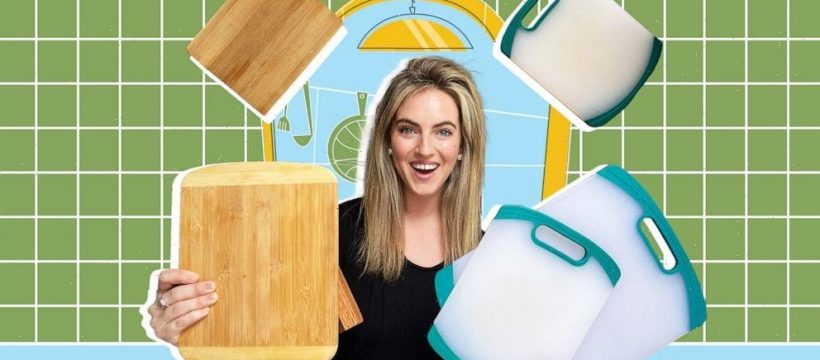Building confidence in the kitchen begins with an eagerness to learn, the right equipment and a sharp knife.
That’s why “Good Morning America” Food is helping you get back to basics with culinary advice to help simplify the recipe for success in your kitchen.
I like to dampen a paper towel or thin kitchen towel, place it on the countertop and set the board on top to ensure that it won’t slide around while I’m working.
How to properly care for a nice wood cutting board
If you have a high-quality natural wooden cutting board, it’s important to take care of it. Gently hand wash it with warm, soapy water, rinse and sanitize, then dry it off with a towel before letting it completely air dry. Once the wood is fully dry, to help protect it from getting stained, split or warped, regularly apply a wax-free and food-grade mineral oil to help it maintain its moisture and stay in peak condition.
It’s not one size fits all, but these work for most
Smaller cutting boards are great for cocktail and snack prep. Whether you need to slice an apple or cut some lime wedges, something between 7 to 10 inches is a great size for the job.
An everyday cutting board that you would instantly reach for, something in the 13-by-9-inch range, is perfect for basic prep work. This size is great for chopping fruits and veggies with enough space to keep your knifework on the surface.
When it comes to a workhorse-style cutting board, the 15-by-10-inch size range is perfect to prep multiple ingredients for one dish on one board. Rosen said this kind of board is “roomy enough for breaking down something large like a butternut squash or a loaf of fresh bread.”
A carving board, which is usually around 21-by-15-inches with grooves on the sides, is used for just that — carving meats — whether it’s an everyday roasted chicken or a roast for a holiday crowd. With plenty of room on this larger size, it’s also versatile for home cooks who meal prep one day a week or someone who loves mise en place before cooking a large meal.
Keep it sanitary
Because cutting boards will touch raw animal proteins, it’s important to understand how to properly clean and disinfect your surface or know when it’s time to replace a board to avoid contamination and foodborne illnesses. Research shows that plastic beats wood when it comes to cleanliness.
In many cases, plastic can be tossed in a dishwasher or hot soapy water but a small diluted amount of bleach or chlorine-based sanitizer can be more effective. According to a study by the University of Michigan, knives create small cuts in the plastic that can make it easier for bacteria to hide in the deeper grooves and harder to disinfect fully over time.
Although wood boards can be a bit laborious to clean, a food safety researcher from North Carolina State University found that once bacteria gets pulled under the surface “the grains pulls down fluid, trapping the bacteria — which are killed off as the board dries after cleaning.”
Rosen shared another tip to help ensure safe cooking without cross contaminating: color code or label your cutting boards.
“Our favorite way to tackle this is red for meat and poultry, blue for fish and seafood, and green for fruits and veggies,” she said.
Source: Read Full Article
